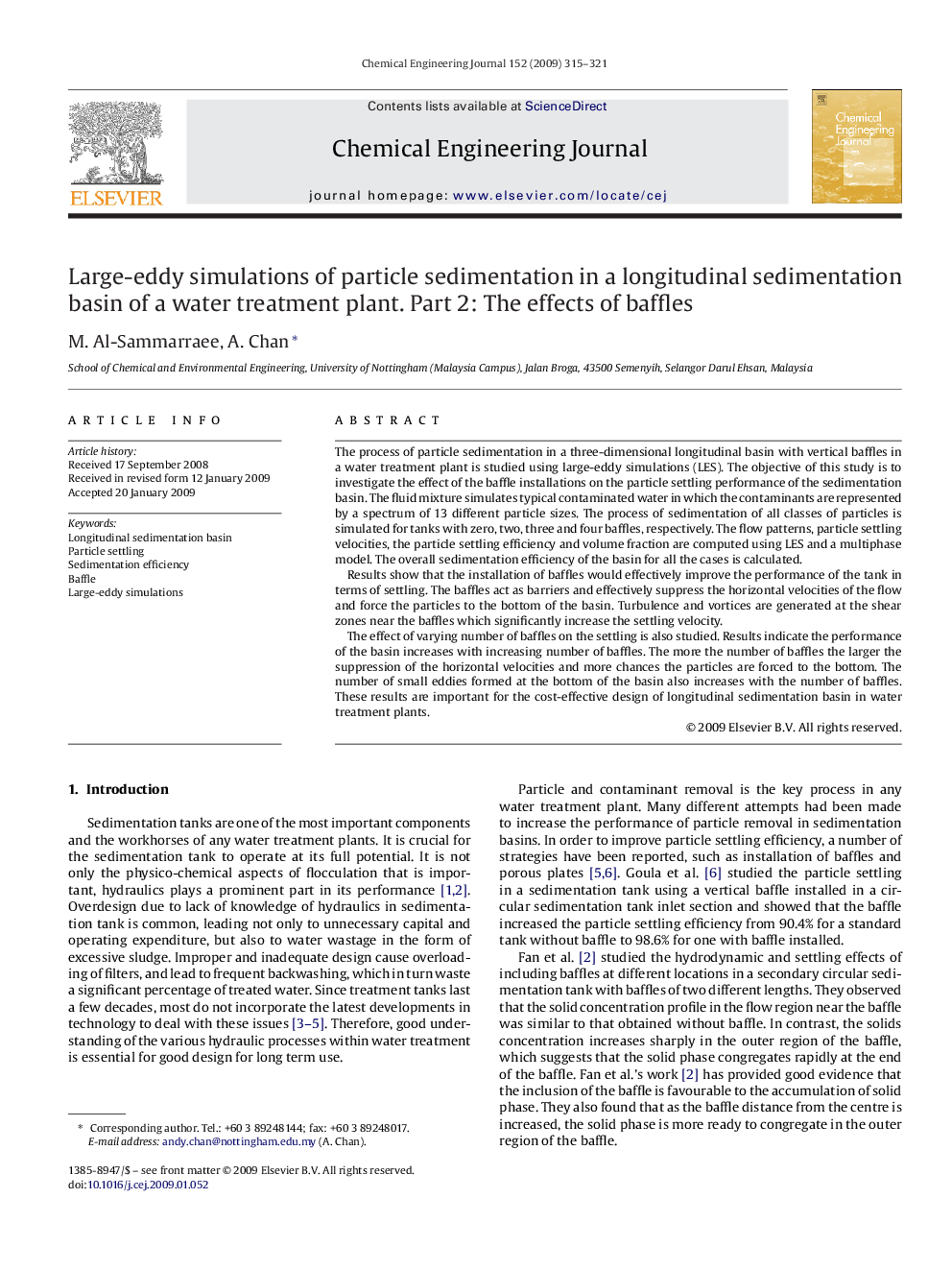| Article ID | Journal | Published Year | Pages | File Type |
|---|---|---|---|---|
| 152114 | Chemical Engineering Journal | 2009 | 7 Pages |
The process of particle sedimentation in a three-dimensional longitudinal basin with vertical baffles in a water treatment plant is studied using large-eddy simulations (LES). The objective of this study is to investigate the effect of the baffle installations on the particle settling performance of the sedimentation basin. The fluid mixture simulates typical contaminated water in which the contaminants are represented by a spectrum of 13 different particle sizes. The process of sedimentation of all classes of particles is simulated for tanks with zero, two, three and four baffles, respectively. The flow patterns, particle settling velocities, the particle settling efficiency and volume fraction are computed using LES and a multiphase model. The overall sedimentation efficiency of the basin for all the cases is calculated.Results show that the installation of baffles would effectively improve the performance of the tank in terms of settling. The baffles act as barriers and effectively suppress the horizontal velocities of the flow and force the particles to the bottom of the basin. Turbulence and vortices are generated at the shear zones near the baffles which significantly increase the settling velocity.The effect of varying number of baffles on the settling is also studied. Results indicate the performance of the basin increases with increasing number of baffles. The more the number of baffles the larger the suppression of the horizontal velocities and more chances the particles are forced to the bottom. The number of small eddies formed at the bottom of the basin also increases with the number of baffles. These results are important for the cost-effective design of longitudinal sedimentation basin in water treatment plants.
